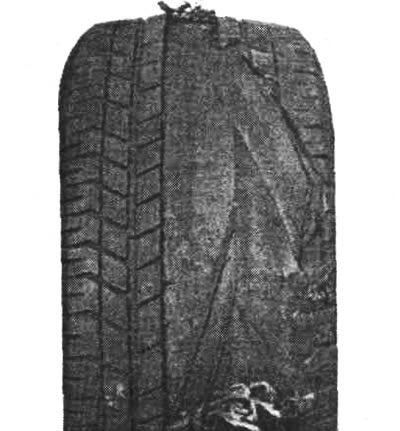 Too low air pressure: the tire overheats and delaminates.
Too low air pressure: the tire overheats and delaminates.Cold tire pressure readings (bar)
Model: Sedan/Station wagon
| Tire size* | Normal load up to 3 persons | Full load over 3 persons | ||
| ahead | behind | ahead | behind | |
| 175/70R14 | 2,2 | 2.2 | 2,2/2,4** | 3,1 |
| 185/60R14 | 2,2 | 2,2 | 2,2/2,4** | 3,1 |
| 195/60R15 | 2,2 | 2.2 | 2.2/2,3** | 3,1 |
| 195/55R15 | 2,0 | 2,0 | 2,2/2,5** | 3,1 |
| 205/50R16 | 2.2 | 2.2 | 2,2/2,4** | 3,1 |
| 125/80R15*** | 4,2 | 4.2 | 4,2 | 4,2 |
* summer tires
** cars with diesel engine
*** emergency wheel. At continuous speeds above 160 km/h, increase the air pressure in all cases by 0.2 bar.
Do not forget to screw on the protective caps on the valves
After checking the tire pressure, the valves in the tires must always be closed with protective caps. If dirt gets into the valve, then relative tightness will come to an end - the tire will now lose air constantly. Therein lies the danger. Never drive with too low tire pressure - the tire temperature will rise excessively. Sooner or later, this will surely cause delamination or tire burst phenomena. And high blood pressure (by about 0.2-0.3 bar) can be advantageous: steering is more responsive, tires are kept further and fuel consumption is slightly reduced. Drawback: The car rolls a little harder.
Visitor comments